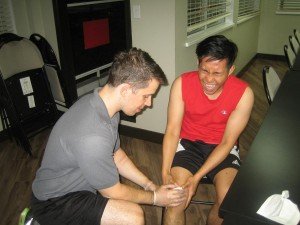
Are you worried about finding the right training provider for you? Honolulu CPR in Hawaii is one of the best providers you will find in the country. Classes are held all through the week, sometimes even during the weekends if there are many trainees who cannot be accommodated by the regular schedule. We offer the highest quality training at the most affordable rates. Other providers in Honolulu cannot compete with our rates and quality.
If you plan on enrolling in a class, you can find more details on the Honolulu CPR website. You can also enroll on the website, using the online application form. Other ways to enroll are through e-mail, telephone, or in person. We want our trainees who sign up for training in the way most convenient to them.
Credentials
Our trainees often enroll in a course because they need CPR training credentials. All eight programs at Honolulu CPR are credentialing programs. We require the following requirements from students before we award them with a training certificate:
- Complete attendance
- Passing the pre-test (skills and written test for ALS programs)
- Passing the certification exam
While our basic courses do not have requirements, we require trainees to train first in Basic Life Support for HCPs before they can enroll in Advanced Life Support programs. Only the ALS programs have pre-tests as well.
The training credentials we award students with have to be renewed every 2 years. They can be renewed through re-certification classes, available for BLS for HCPs, ACLS, and PALS training.
Training programs
- Heartsaver CPR – Basic Life Support; four hours; focus: one-person CPR and first aid for the public
- Heartsaver CPR C – Basic Life Support; four and a half hours; focus: one-person CPR and first aid for HCPs
- Basic Life Support for HCPs – Basic Life Support; four and a half hours; focus: one and two-person CPR, first aid and AHA BLS guidelines
- Advanced Cardiac Life Support – Advanced Life Support; 16 hours (2 days); focus: medical management of adult cases
- Pediatric Advanced Life Support – Advanced Life Support; 14 hours (2 days); focus: medical management of pediatric cases (infants, toddlers, and younger children)
Re-certification
- Basic Life Support for HCPs re-certification – four hours
- Advanced Cardiac Life Support re-certification – five to six hours
- Pediatric Advanced Life Support re-certification – six to eight hours
History of CPR
It was in 1740 when the Paris Academy of Sciences officially recommended the use of mouth-to-mouth resuscitation for victims of drowning. This was start of the path that paved the way for cardiopulmonary resuscitation. After that period, more and more research was done on how to manage different cardiac and respiratory arrest cases. In the 1903, Dr. Crile reported the first successful use of external chest compressions to resuscitate a patient in arrest. In 1972, the first mass training of CPR was headed by Leonard Cobb in Seattle Washington. A few years later in 1979, ACLS was developed after the Third National Conference on CPR. PALS was soon introduced in 1988.
